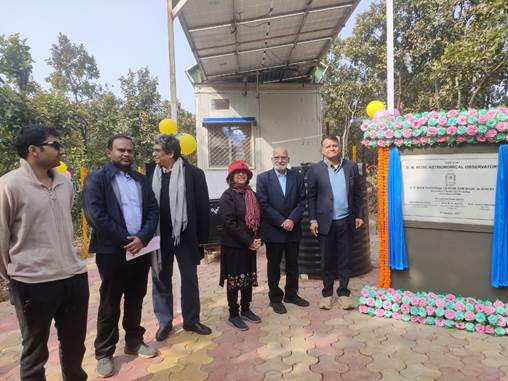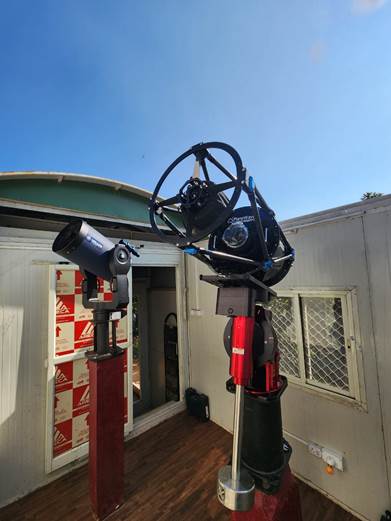A new observatory set up by the S N Bose Centre for Basic Sciences (SNBCBS), an autonomous institute of the Department of Science and Technology, atop the Panchet Hill in the Garpanchakot area of Purulia district in West Bengal will significantly help in scientific observations of astronomical objects, training students in handling telescopes and recording data, generating national and international collaboration in astronomical research and most importantly, to fill in the longitudinal gap.
The observatory at a height of 600 meters above ground level and at longitude of approximately 86° E, will be a major observatory not only in eastern India, but also in the world. Along the 86 degrees East longitude stretching from the Arctic Ocean in the north to Antarctica in the south, there are very few observatories. This observatory will fill that gap. Renowned astrophysicist and Vice Chancellor of Ashoka University opines that in order to observe transient astronomical phenomena lasting a few minutes to a few hours, it is important to have good observatories on all the longitudes of the globe. Therefore, the Panchet observatory is strategically positioned.
S.N. Bose Centre has signed an MOU with the Sidhu Kanu Birsa University for joint responsibility of running the observatory and sharing resources.
At the virtual inauguration at the SKB University, Dr. Tanusri Saha-Dasgupta, Director of S.N. Bose Centre, said that this was a moment of pride for the Centre and she was hopeful that the Centre will be able to make significant contribution to the body of knowledge in observational astronomy.
Shri Viswajit Sahay, Financial Adviser of Department of Science and Technology, who graced the inaugural ceremony, said that an observatory always creates its own ecosystem in its vicinity and the Panchet observatory too holds this promise.
Dr Pabitra Kumar Chakrabarty, Vice Chancellor of SKB University said that an observatory of this standard in Purulia, which is considered as a backward district of West Bengal, could be a great source of encouragement to the students of the University.
The work which involved conceptualization, layout and initiation of the observatory by Dr. Ramkrishna Das, Dr. Soumen Mandal and Dr. Tapas Baug, all three from the Department of Astrophysics of SNBNCBS, started after the formal acquisition of land in 2018. Their work included site characterization, determining astronomical ‘seeing’ and weather parameters and installation of a 14-inch telescope for scientific observations.
Dr. B.N. Jagtap, Chairman of the Governing Body of the SNBCBS, Shri Vivek Pankaj, SDO of Raghunathpur and scientists from SNBCBS participated in the virtual as well as on site inauguration of the observatory.


